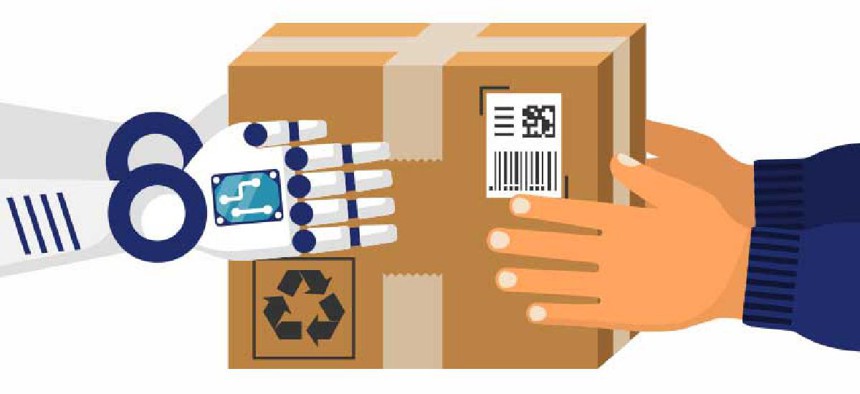How robots would help the Post Office

With congressional funding USPS could start a robotics initiative to sort, move and deliver mail. A new report calls for $1B per year.
Congress should pass reform legislation that would establish a Technology Innovation Fund for the U.S. Postal Service (USPS) to enable robotic last-mile postal delivery, a new report states.
“Of particular promise are sorting and delivery robots, which could sort mail, including into local delivery orders, deliver mail to homes, or both,” according to “A New Vision for Postal Reform in the E-commerce Age,” a Feb. 11 report from the Information Technology and Innovation Foundation (ITIF). “One could imagine a postal worker driving to particular routes with a fleet of 10 or so robots, letting each one off to ‘walk’ a particular mail route, and then picking them back up at the end of the route.”
This funding would help support innovation at USPS, the report states, likening the approach to those at the Defense Department and NASA, which get federal funding for automation and robotics research. Although robotics is not sophisticated or inexpensive enough yet to sort and deliver mail, progress is happening. The report cites work at Ford Motor Co. and the Toyota Research Institute to test robots that can deliver packages to homes.
A fund would help bolster USPS’ relatively small capital expenditures and research and development investments, the report states. In 2019, the agency spent $1.7 billion, or 2.3% of revenue, on capital equipment, compared with $10.3 billion, or 11.8% of sales, in the private-courier industry. That same year, USPS spent $26.7 million on R&D, while in 2018, the transportation and warehousing sector invested 10 times that amount. Congress should appropriate at least $1 billion a year to a USPS robotics development and adoption fund, the report states.
USPS could use the funding to start a robotics initiative to sort, move and deliver mail, and to buy robotics systems, configure plants to use them and start and expand testing. What’s more, the agency could design and build new sorting centers that would enable maximum use of robotics and reduce labor costs.
“If successful, such an initiative would dramatically lower USPS delivery costs, and more importantly, lead to a significant advancement in robotics (and U.S. competitiveness in the industry), which would help a wide array of sectors,” the report states. “However, such an initiative should be focused on automation of USPS’s core mission of delivering mail to all households in America six days a week, not on using robotics to compete with other companies involved in one-off deliveries.”
The idea of using robots for mail delivery is not new. A USPS Office of Inspector General report from April 2018 lauds the potential autonomous mobile robots offer the agency: “They can potentially help the Postal Service cut costs, increase efficiency, and enable new services.” It goes on to say that despite the high costs of robotics right now, “it would still be worthwhile for the Postal Service to conduct small-scale tests and pilots, as other worldwide posts have done, to test how the technology fits into the Postal Service’s unique operating environment.”
The ITIF report also recommends that USPS experiment with autonomous trucks for long-haul mail movement and drone delivery, particularly in rural areas.
Read the full report here.





